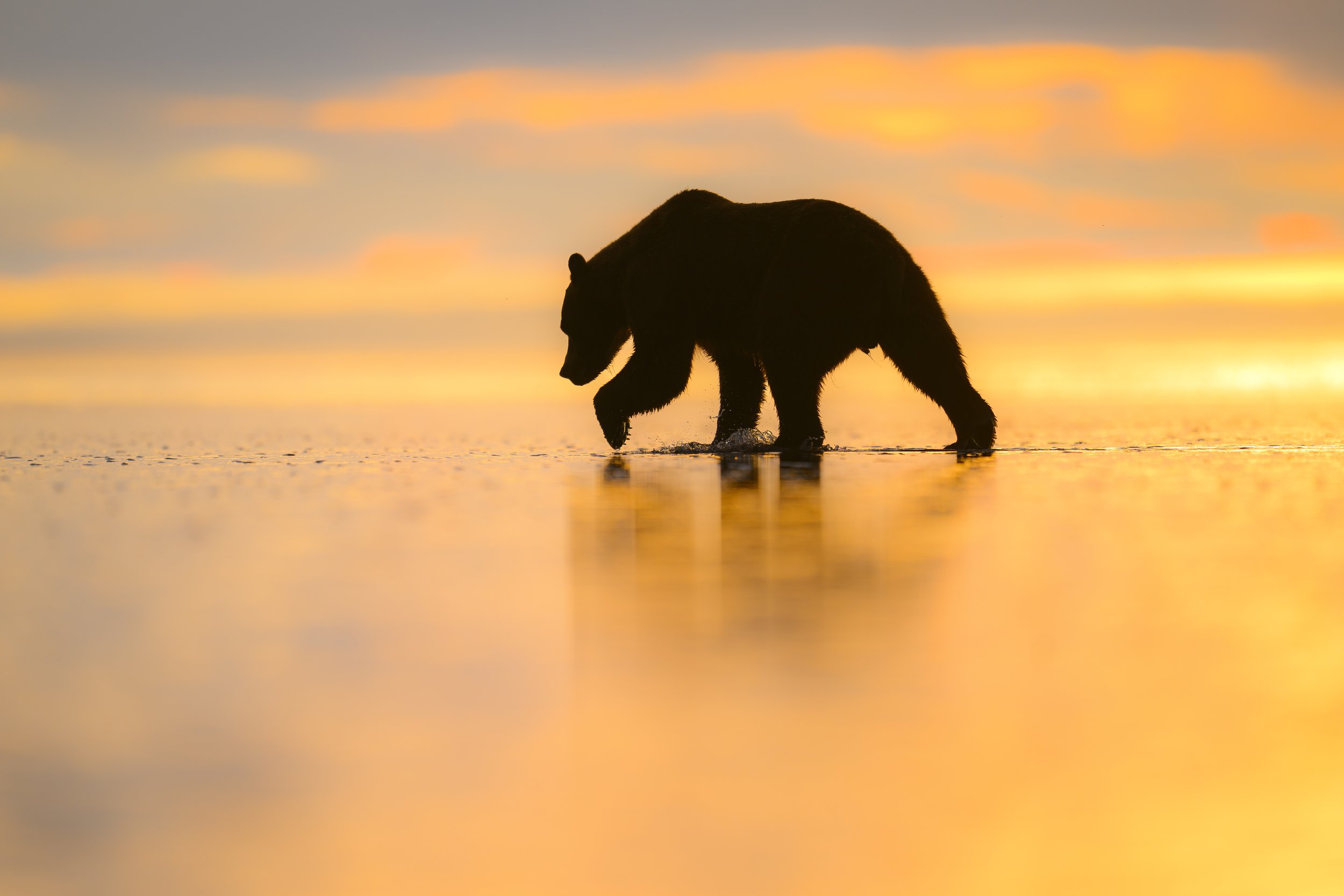Mastering Silhouettes
To master silhouettes, you must first understand the Elements of Design
Learning the nuances of working with this type of light will transform all aspects of your wildlife photography
Understand the psychology of color in your photographs
Learn the different types of silhouettes and how to implement them in your photography
The morning was dark. Heavy rain laden clouds hung low in the sky as the storm that seemed to never end continued to engulf the western coast of Cook Inlet. The day before, winds howled out of the north with gusts upwards of fifty miles per hour down this beach. Despite the darkness, I could make out nine shadowy forms moving out across the mudflats before me. Low tide this morning exposed several hundred yards of these flats and a thin layer of water set over top the sand as so many bears worked their way to the outer bar where gentle waves lapped at the shore now that the wind had laid down.
When people think of brown bears in Alaska, they often think of salmon. While salmon are inextricable from the natural history of some of these bears, survival here requires more. Salmon are only one very small part of the story.
The thing about the salmon run is that it’s seasonal – lasting only a few short weeks out of the year in any given location. Runs are often finicky. They get delayed some years or wiped out by commercial fishermen with set nets in other years. Species such as pink salmon return only every other year. Even when the salmon do return, countless variables impact a bear’s ability to hunt for these anadromous fish. If the tide is too low, the fish can’t push over the shoals at the mouth of the river. If the tide is too high, bears can’t see or access the fish there. If there has been a lot of rain (and this is Alaska we are talking about) rivers are higher, the timing for water depth is off, and clarity is reduced as mud and silt wash out into the ocean.
Now add to this the fact that surviving hibernation isn’t as simple as just packing on the pounds from copious amounts of salmon in the first place.
For these bears to survive hibernation, they need a nutritional balance between protein, fat, and carbohydrates. This ratio is basically seventeen percent protein with the other eighty three percent of their diet made up of carbohydrates and fat. This is a delicate balance that must be maintained between muscle mass and fat stores. If you or I laid around in bed for six to eight months and then attempted to get up and go to work, we would collapse from muscle atrophy. If the sole insulation for that bed was the depth of the snow above to help mitigate temperatures that can fall to minus ninety degrees Fahrenheit, our bodies would quickly consume all the adipose fat we have stored, followed by the very marrow of our bones, leading to rapid starvation if the cold didn’t kill us first.
And yet, bears handle this just fine. Part of it is their unique physiological and biochemical make up. But it’s the specific dietary ratio that they seek during hyperphagia (that period before hibernation when they become 24/7 eating machines) that allows their bodies to do what they were built to do. And all of this without a never-ending barrage of talking heads, magazine articles, YouTube videos, dieticians, nutritionists, or books about fad diets to help them figure out how to do it.
The objects of desire for these bears this morning rest hidden beneath the sand and mud. Razor clams are predictable so long as the beds have not been wiped out in an area. Every other week, for a period of three days, a feast of fat and minerals is to be had on these mudflats.
As a rule of thumb, tides get larger the farther from the equator you are. There are many different variables that impact the tides, however. Geography, the slope of the continental shelf, the Coriolis effect, and a couple hundred other variables all dictate how large
Uncompromising quality. Workshop level education. The Art & Science of wildlife photography at your finger tips.
Already a member? Sign In


